-
Security education is becoming a central part of security hiring, promotion
There is a growing emphasis on homeland security-related education in security hiring in both the private and government sectors; this growing demand has lead to a rapid growth in college and university degree programs in homeland security – the number of such programs is now estimated to be 350; trouble is, those programs do not have a commonly agreed upon curriculum, and as a result, the classes chosen to be part of an individual’s curriculum are based on the available faculty, rather than proven value to the students
-
-
Nuclear waste-burning technology to make nuclear energy more appealing
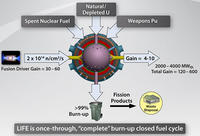
Toxic nuclear waste is stored at sites around the United States, and the need to store nuclear waste is widely considered to be a major disadvantage associated with nuclear energy; physicists have been granted a U.S. for patent for a novel fusion-fission hybrid nuclear reactor which would use nuclear fusion and fission together; the invention could drastically decrease the need for any additional or expanded geological repositories, making nuclear power cleaner and more viable
-
-
Nanotechnology sensor detects mercury in water, fish

When mercury is dumped into rivers and lakes, the toxic heavy metal can end up in the fish we eat and the water we drink; to help protect consumers from the diseases and conditions associated with mercury, researchers have developed a nanoparticle system that is sensitive enough to detect even the smallest levels of heavy metals in our water and fish
-
-
Radiation-enabled computer chips allow low-cost security imaging systems
With homeland security on high alert, screening systems to search for concealed weapons are crucial pieces of equipment; these systems, however, are often prohibitively expensive, putting them out of reach for public spaces such as train and bus stations, stadiums, or malls, where they could be beneficial; until now
-
-
Himalayan glaciers retreating at an uneven rate, making South Asia water supply future unclear
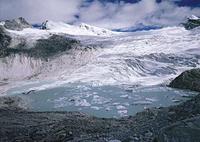
MI6, the U.K. intelligence service, four years ago predicted that the world’s first water war – that is, war between countries over access to water resources — will take place between India and Bangladesh sometime between 2015 and 2020; the reason for the war: intensifying conflicts over dwindling Himalayas water sources; glaciers in the eastern and central regions of the Himalayas appear to be retreating at accelerating rates, similar to those in other areas of the world, while glaciers in the western Himalayas are more stable and could be growing, a new report says
-
-
Serious limitations make boost-phase missile interception impractical
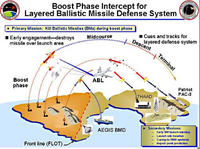
One of the central elements of President Reagan’s 1983 “Star Wars” ballistic missile defense initiative was boost-phase defense: boost-phase defense systems are intended to shoot down enemy missiles immediately following launch while the rocket engine is still firing; a new congressionally mandated study by the National Research Council study says that to defend against ballistic missile attacks more effectively, the United States should concentrate on defense systems that intercept enemy missiles in midcourse and stop spending money on boost-phase defense systems of any kind
-
-
More accurate method for predicting hurricane activity devised
Researchers have developed a new method for forecasting seasonal hurricane activity that is 15 percent more accurate than previous techniques; the new approach should give policymakers more reliable information than current state-of-the-art methods
-
-
At least 200,000 tons of oil, gas from Deepwater Horizon spill consumed by bacteria

Researchers have found that, over a period of five months following the disastrous 2010 Deepwater Horizon explosion and oil spill, naturally occurring bacteria which exist in the Gulf of Mexico consumed and removed at least 200,000 tons of oil and natural gas that spewed into the deep Gulf from the ruptured well head
-
-
The spring 2010 BP oil disaster could have been prevented: expert
The BP oil disaster in the Gulf of Mexico during the spring of 2010 could have been prevented if the experiences of earlier disasters had been put to use, an expert claims; the U.S. government is now accusing BP of gross negligence and deliberate misconduct, and taking the company to court
-
-
The historical and future probabilities of 9/11-size terrorist events
On the eleventh anniversary of the 9/11 attacks, two statisticians apply statistical methods to try and accurately estimate the probability of a 9/11-size terrorist attack occurring during the next decade; examining the historical data from 1968 to 2007, they show that the likelihood of a 9/11-size attack occurring within this time frame was between 11 and 35 percent; looking forward, the likelihood increase to between 25 and 50 percent – and, under certain circumstances, to 95 percent
-
-
Bolstering e-mail security
On the whole, security is not a primary concern for most day-to-day e-mails, but some e-mails do contain personal, proprietary, and sensitive information, documents, media, photos, videos, and sound files; the open nature of e-mail means that they can be intercepted and if not encrypted, easily read by malicious third parties
-
-
Canada funds digital technology to enhance maritime security, surveillance
New funding will allow exactEarth to improve its ability to locate more than 80,000 ships daily anywhere around the world and transmit this information quickly to its customers; this data is used within Canada and globally for a number of purposes, including enhancing maritime security and surveillance as well as search and rescue support
-
-
There is enough wind power to meet global energy demand
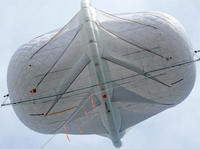
There is enough energy available in winds to meet all of the world’s demand; atmospheric turbines that convert steadier and faster high-altitude winds into energy could generate even more power than ground- and ocean-based units
-
-
Predicting waves’ height, force could double marine-based energy
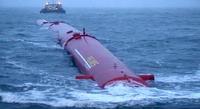
In the search for alternative energy, scientists have focused on the sun and the wind; there is also tremendous potential in harnessing the power of the ocean’s waves, but marine energy presents specific challenges that have made it a less promising resource; one of these challenges is the fact that waves differ in terms of their size and force; forecasting wave height one second in advance optimizes energy collection
-
-
Next generation of advanced climate models needed
From farmers deciding which crops to plant next season, to mayors preparing for possible heat waves, to insurance companies assessing future flood risks, to those responsible for infrastructure protection having to decide how best to use scarce resource to mitigate climate change-induced disasters, an array of stakeholders from the public and private sectors rely on and use climate information; the U.S. National Research Council says he U.S. collection of climate models should advance substantially to deliver more detailed, smaller scale climate projections
-
More headlines
The long view
New Technology is Keeping the Skies Safe
DHS S&T Baggage, Cargo, and People Screening (BCP) Program develops state-of-the-art screening solutions to help secure airspace, communities, and borders
Factories First: Winning the Drone War Before It Starts
Wars are won by factories before they are won on the battlefield,Martin C. Feldmann writes, noting that the United States lacks the manufacturing depth for the coming drone age. Rectifying this situation “will take far more than procurement tweaks,” Feldmann writes. “It demands a national-level, wartime-scale industrial mobilization.”
How Artificial General Intelligence Could Affect the Rise and Fall of Nations
Visions for potential AGI futures: A new report from RAND aims to stimulate thinking among policymakers about possible impacts of the development of artificial general intelligence (AGI) on geopolitics and the world order.
Smaller Nuclear Reactors Spark Renewed Interest in a Once-Shunned Energy Source
In the past two years, half the states have taken action to promote nuclear power, from creating nuclear task forces to integrating nuclear into long-term energy plans.
Keeping the Lights on with Nuclear Waste: Radiochemistry Transforms Nuclear Waste into Strategic Materials
How UNLV radiochemistry is pioneering the future of energy in the Southwest by salvaging strategic materials from nuclear dumps –and making it safe.
Model Predicts Long-Term Effects of Nuclear Waste on Underground Disposal Systems
The simulations matched results from an underground lab experiment in Switzerland, suggesting modeling could be used to validate the safety of nuclear disposal sites.
